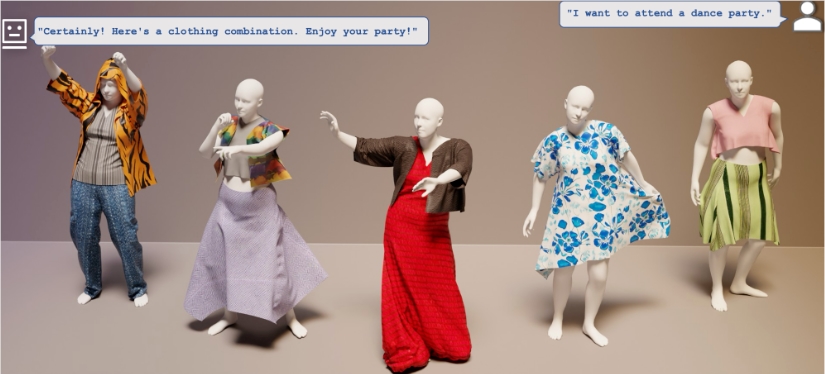Recently, ShanghaiTech University, together with the research teams from the University of Pennsylvania, Deemos Technology and NeuDim Technology, jointly developed an innovative model:DressCodeThis model allows users to generate a variety of exquisite 3D clothing models by simply entering a simple text description, such as a French lace dress or a set of red silk pajamas. It is really good news for designers!

DressCode can not only generate clothing styles based on the user's text prompts, but also select different materials, such as wool, lace and silk. In addition, it will add realistic lighting effects to help designers view the display effects of clothing in different scenarios. Such functions are undoubtedly an important tool for designers in the fields of VR, AR, film and television, game development and e-commerce to improve the efficiency of 3D content development.
Among them, SewingGPT is the core module of DressCode. It is based on the Transformer architecture and focuses on understanding the semantics of text and generating relevant content. When a user enters a description, such as "design a summer cotton dress with a V-neck, pleated waist, and A-shaped skirt", SewingGPT will parse out the keywords and generate a series of structured design instructions. These instructions not only include the appearance characteristics of the clothing, but also the specific methods of cutting and sewing to ensure the feasibility of the design.
These instructions are then passed to the 3D modeling engine and combined with the fabric physical property database for modeling. In order to make the generated 3D clothing more realistic, DressCode uses advanced cloth dynamics algorithms that can simulate the performance of cloth in motion, such as the formation of wrinkles and the swinging effects of skirts.
In order to better display these 3D models, DressCode also provides a wealth of customizable virtual models, and users can choose different body shapes and skin colors. At the same time, the system has a built-in action library that can support various settings from static displays to complex catwalks, allowing users to fully evaluate the dynamic performance of clothing.
In terms of operation, DressCode is also very user-friendly. Users can examine the details of clothing from multiple angles through simple rotation, scaling and movement operations. It is very suitable for non-professional designers.